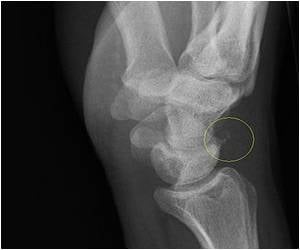Pioneering 'tweezers' have been developed by researchers from the University of Southamptom that use ultrasound beams to grip and manipulate tiny clusters of cells.

By holding the cells in the required position firmly but gently, the tweezers can also mould the growing tissue into exactly the right shape so that the implant is truly fit-for-purpose when inserted into the patient's knee. Over 75,000 knee replacements are carried out each year in the UK; many could be avoided if cartilage implants could be improved.
The ultrasonic tweezers were developed by researchers from the Universities of Southampton, Bristol, Dundee and Glasgow as well as a range of industrial partners.
Professor Hill said: "Ultrasonic tweezers can provide what is, in effect, a zero-gravity environment perfect for optimizing cell growth. As well as levitating cells, the tweezers can make sure that the cell agglomerates maintain a flat shape ideal for nutrient absorption. They can even gently massage the agglomerates in a way that encourages cartilage tissue formation."
Professor Bruce Drinkwater of Bristol University, who co-ordinated the programme, said: "Ultrasonic tweezers have all kinds of possible uses in bioscience, nanotechnology and more widely across industry. They offer big advantages over optical tweezers relying on light waves and also over electromagnetic methods of cell manipulation; for example, they have a complete absence of moving parts and can manipulate not just one or two cells at a time but clusters up to 1mm across - a scale that makes them very suitable for applications like tissue engineering."
The tweezers, developed with Engineering and Physical Sciences Research Council (EPSRC) funding, involve multiple, tiny beams of ultrasonic waves that, in a typical device, point into a 10 mm-diameter chamber from all around. With the aid of a powerful microscope to monitor the procedure, the forces generated by the waves can then be manipulated so that they nudge cells into the required position, turn them around, or hold them firmly in place.
Advertisement
This research will enable ultrasonic tweezer technology to be refined and miniaturized and specific uses to be explored and developed in the next few years. The first real-world applications, in sectors such as bioscience and electronics, could potentially be developed within around five years.
Advertisement









